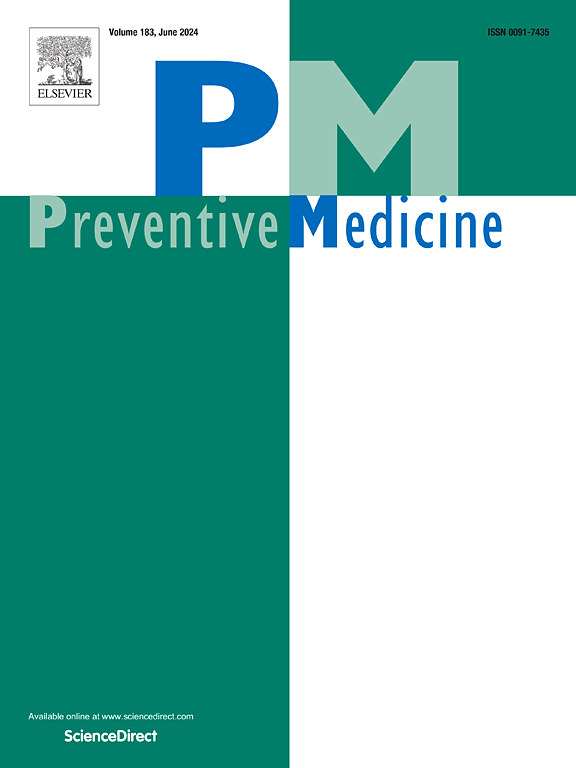Evaluating the predictive performance of different data sources to forecast overdose deaths at the neighborhood level with machine learning in Rhode Island
IF 3.2
2区 医学
Q1 MEDICINE, GENERAL & INTERNAL
引用次数: 0
Abstract
Objectives
To evaluate the predictive performance of different data sources to forecast fatal overdose in Rhode Island neighborhoods, with the goal of providing a template for other jurisdictions interested in predictive analytics to direct overdose prevention resources.
Methods
We evaluated seven combinations of data from six administrative data sources (American Community Survey (ACS) five-year estimates, built environment, emergency medical services non-fatal overdose response, prescription drug monitoring program, carceral release, and historical fatal overdose data). Fatal overdoses in Rhode Island census block groups (CBGs) were predicted using two machine learning approaches: linear regressions and random forests embedded in a nested cross-validation design. We evaluated performance using mean squared error and the percentage of statewide overdoses captured by CBGs forecast to be in top percentiles from 2019 to 2021.
Results
Linear models trained on ACS data combined with one other data source performed well, and comparably to models trained on all available data. Those including emergency medical service, prescription drug monitoring program, or carceral release data with ACS data achieved a priori goals for percentage of statewide overdoses captured by CBGs prioritized by models on average.
Conclusions
Prioritizing neighborhoods for overdose prevention with forecasting is feasible using a simple-to-implement model trained on publicly available ACS data combined with only one other administrative data source in Rhode Island, offering a starting point for other jurisdictions.
评估不同数据源的预测性能,以预测罗德岛州社区一级的机器学习过量死亡。
目标:评估不同数据源在预测罗德岛州居民区致命用药过量方面的预测性能,目的是为其他对预测分析感兴趣的辖区提供一个模板,以指导用药过量预防资源的使用:我们评估了来自六个行政数据源(美国社区调查 (ACS) 五年估计、建筑环境、紧急医疗服务非致命性用药过量响应、处方药监测计划、carceral release 和历史致命性用药过量数据)的七种数据组合。罗德岛州人口普查区组(CBGs)的致命用药过量预测采用了两种机器学习方法:线性回归和嵌套交叉验证设计中的随机森林。我们使用均方误差和预测 CBG 在 2019 年至 2021 年处于最高百分位数的全州过量用药百分比来评估性能:根据 ACS 数据和一个其他数据源训练的线性模型表现良好,与根据所有可用数据训练的模型不相上下。那些将紧急医疗服务、处方药监测计划或罪犯释放数据与 ACS 数据相结合的模型平均达到了模型优先考虑的 CBG 所捕获的全州过量用药百分比的先验目标:在罗德岛州,利用公开的 ACS 数据和仅有的一个其他行政数据源训练出的简单易用的模型,通过预测确定预防用药过量的优先社区是可行的,这为其他辖区提供了一个起点。
本文章由计算机程序翻译,如有差异,请以英文原文为准。
求助全文
约1分钟内获得全文
求助全文
来源期刊

Preventive medicine
医学-公共卫生、环境卫生与职业卫生
CiteScore
7.70
自引率
3.90%
发文量
0
审稿时长
42 days
期刊介绍:
Founded in 1972 by Ernst Wynder, Preventive Medicine is an international scholarly journal that provides prompt publication of original articles on the science and practice of disease prevention, health promotion, and public health policymaking. Preventive Medicine aims to reward innovation. It will favor insightful observational studies, thoughtful explorations of health data, unsuspected new angles for existing hypotheses, robust randomized controlled trials, and impartial systematic reviews. Preventive Medicine''s ultimate goal is to publish research that will have an impact on the work of practitioners of disease prevention and health promotion, as well as of related disciplines.
 求助内容:
求助内容: 应助结果提醒方式:
应助结果提醒方式:


